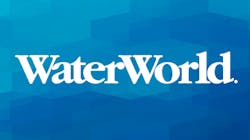News from the Southern Nevada Water Authority (SNWA) has arrived in my mailbox once again. I am starting to like these fliers that provide valuable information and substance for thought. Assembly Bill 220, signed by Governor Lombardo in June 2023, gave “SNWA the ability to limit water use at single-family homes to about 163,000 gallons a year” if the situation with the Colorado River gets any worse.
For this to happen, two things have to occur first. The federal government would have to reduce Nevada’s allocation to 270,000 acre-feet or less, and the SNWA would have to vote to implement the limit. It reads “the limit would only affect the top 20% of residential water users who use most of our residential water supply.” What does that really mean and how does that affect those users, I wonder.
The bill requires housing developers to work with water agencies to ensure there is enough water before developing new neighborhoods, which Arizona has been doing since the 1980s. Not only is this good news for conservation, I wonder if this also means my rent might finally stabilize. My rent has doubled within 10 years. Will the added costs under this bill slow or deter new development, curtailing the massive influx of people from other states able to easily afford new houses here? Or will the added cost be passed to the buyer, ultimately driving up the price of a home?
Inside this issue:
In the editor’s focus, we try to answer the question water utility labs are asking about what can be done to improve environmental monitoring, testing and efficiency. In this piece, George Mattis, senior technical solution consultant, explains how lab information management systems (LIMS) can streamline EM and improve sample scheduling, to help companies achieve more with less.
Not to be ignored, PFAS litigation seems to have gotten a lot of traction this year, and utilities are seeing local EPA support as well as legal support to recover resources lost dealing with the contaminants.
On the topic of lead contamination, there are different ways outlined by the U.S. EPA to avoid pipe corrosion that results in the release of lead over time. Denver Water ruled out the option that would affect other parts of their local water cycle (an orthophosphate rust inhibitor method would have made removal of that chemical imminent for wastewater treatment). Step two was a test between two alkalinity analyzers. In this piece we learn about the trial and the results of that test.
Abroad, we visit beautiful Otago. Home to almost a quarter million people, Otago is one of the largest regions in New Zealand. Its climate, landscape and customer base vary greatly. In order to manage water quality and maintain compliance, Otago upgraded its technology to provide consistency and standardization.
Don’t forget to utilize the links in the digital issue, and check out our Talking Under Water podcast on your favorite podcast provider.



